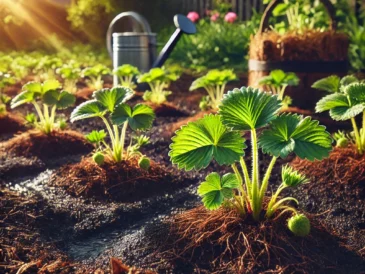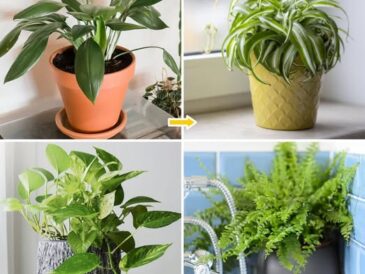6. Protect the Garden from Harsh Weather
Seasonal changes can bring extreme weather conditions that may damage your garden.
- Add Row Covers: Protect delicate plants from frost or heavy rain with lightweight row covers.
- Set Up Windbreaks: Use barriers like hedges, fences, or straw bales to shield the garden from strong winds.
- Ensure Proper Drainage: Check for pooling water and add organic matter to improve soil absorption.
7. Plan for Perennials and Long-Term Crops
No-dig gardens are ideal for perennials and crops that require minimal disturbance.
- Divide and Replant: If you have perennials like rhubarb or asparagus, divide and replant them now for better growth next year.
- Add New Perennials: Introduce long-term crops such as berries, artichokes, or herbs to expand your garden.
8. Monitor and Control Pests
Pests are a common challenge in every garden, but proactive measures can minimize damage.
- Identify Problem Areas: Look for signs of pest activity such as chewed leaves or damaged roots.
- Introduce Beneficial Insects: Attract ladybugs, lacewings, or predatory beetles to control pests naturally.
- Use Organic Deterrents: Apply neem oil, garlic spray, or diatomaceous earth to deter harmful insects.
9. Prepare for Next Season’s Seeds
It’s never too early to start planning your next planting season.
- Harvest and Save Seeds: Collect seeds from this year’s crops and store them in a cool, dry place.
- Order New Seeds: Research and purchase seeds for crops you plan to grow.
- Organize Seed Storage: Label and sort your seeds for easy access when planting begins.
10. Keep Records of Your Garden
Documenting your no-dig garden’s progress helps you learn and improve each season.
- Track Successes and Challenges: Note which plants thrived and which didn’t.
- Create a Planting Calendar: Plan your planting and harvesting schedule for the year ahead.
- Record Soil Amendments: Keep a log of when and how much compost or mulch you’ve added.
Final Thoughts
A no-dig garden thrives on consistent care and smart planning. By tackling these essential tasks now, you’ll set your garden up for a bountiful and sustainable growing season. Remember, the strength of a no-dig garden lies in its harmony with nature—so embrace organic practices, maintain soil health, and enjoy the rewards of this effortless gardening method.




